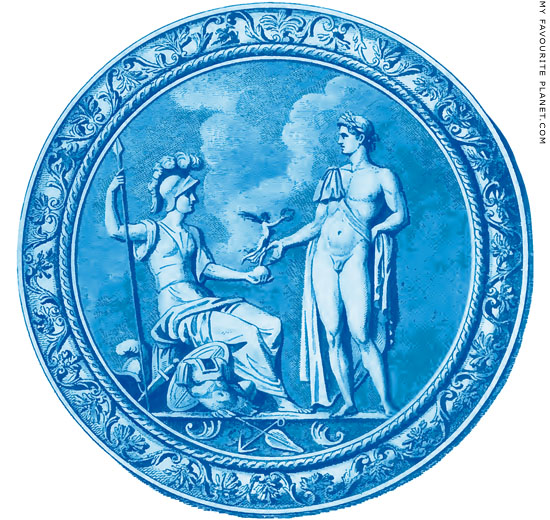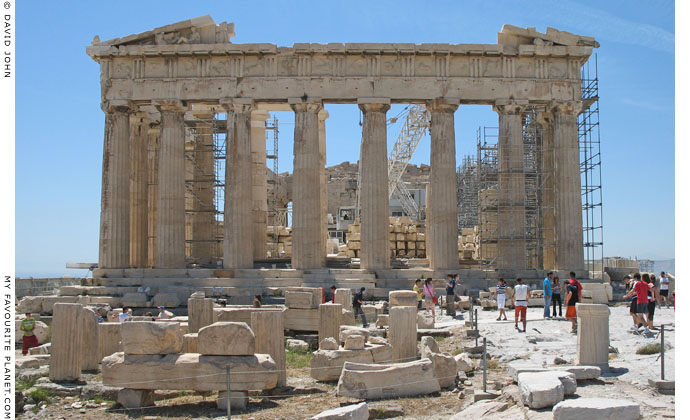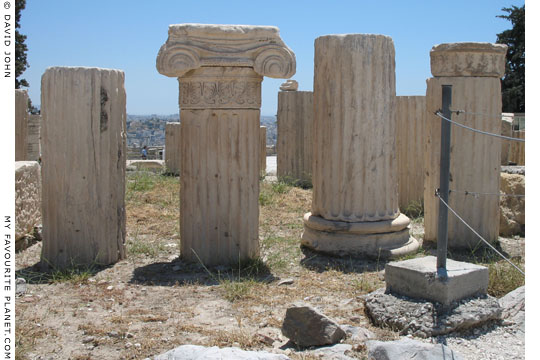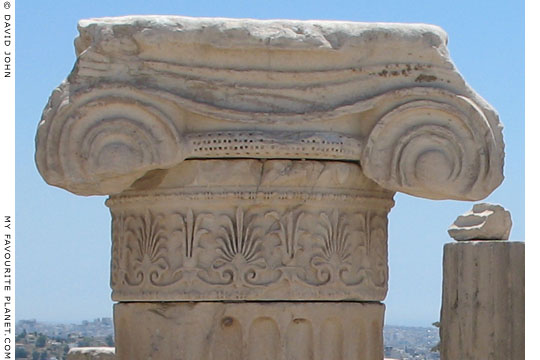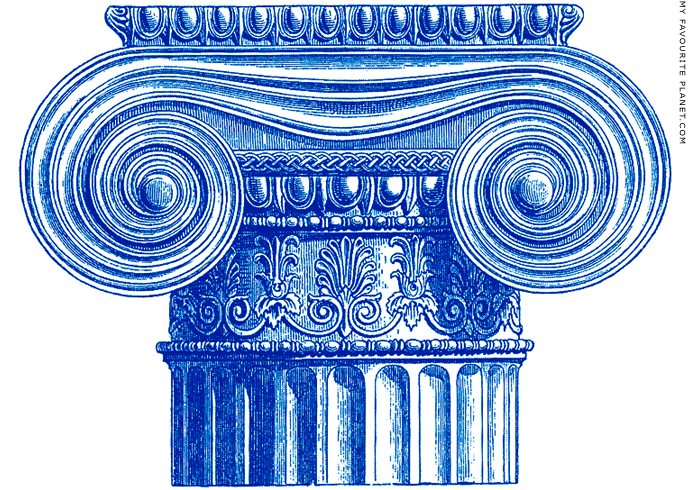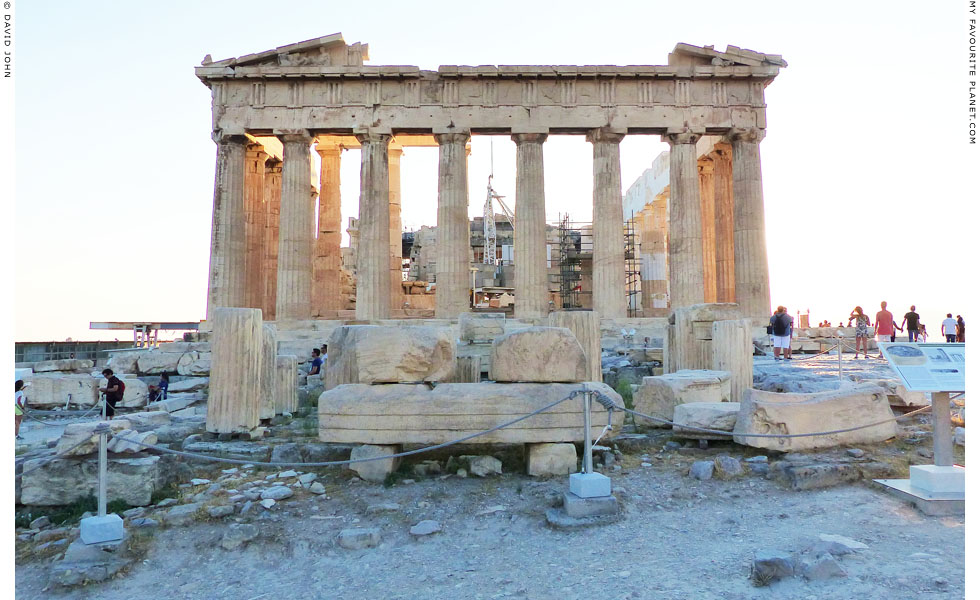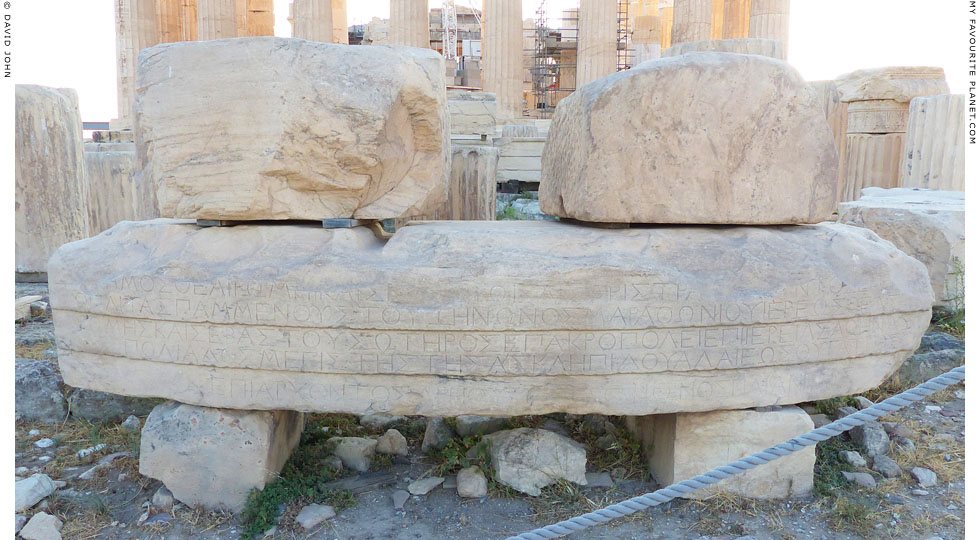The small circular temple, which stood on a rectangular poros foundation about 23 metres east of the Parthenon, was the last significant building constructed on the Acropolis during antiquity. It was the only Roman temple on the Acropolis, and the only temple in Athens dedicated to the cult of Emperor Augustus. Parts of its remains now stand on its original site (see photo below).
The temple was around 7.3 metres tall and had a diameter of around 8.6 metres, with a circular colonnade of nine Ionic columns supporting a conical roof. It is thought that the building was a monopteros (μονόπτερος) open, that is open, without a cella enclosed by a wall (as in the late 19th century reconstruction, right) [1].
It was identified as the Temple of Roma and Augustus after the discovery of part of the architrave bearing the dedicatory inscription by the Demos (people) to "the goddess Rome and Sebastos Caesar" (see photo below). The exact date of its construction is unknown.
The posthumous deification of Julius Caesar started the trend for the worship of emperors as gods. Several temples dedicated to Roma and the first emperor, Octavian, named Augustus (Imperator Gaius Julius Caesar Augustus, 63 BC - 14 AD, reigned 27 BC - 14 AD), were built around the expanding empire during the reign of his successor Tiberius. Cities competed to become the official centre of the imperial cult for their province. (See Pergamon gallery 2, pages 6 and 7.)
Having supported Augustus' enemies Brutus and Cassius, and then Antony and Cleopatra, the Athenians were keen to please him when he finally proved victorious, and grateful that he only punished the city lightly (see Acropolis gallery page 8). It is therefore possible that this temple was built during his lifetime, some time after 27 BC when Octavius was awarded the title Augustus by the Roman Senate, perhaps around 19-17 BC.
It is known that both Augustus and his friend and ally Marcus Agrippa visited Athens [2] and became benefactors of the city; apparently, a cult grew around them here and at other Greek cities.
The dedication to Roma, as the personification of the imperial capital, served both to remind subject cities of the new centre of power, as well as to mitigate the hubris of the emperors. The mention of Roma was gradually dropped, and later imperial temples were dedicated to an emperor, often in conjunction with another god such as Jupiter/Zeus.
Similarities between the archtiectural details of the temple and those of members of the Erechtheion added during Roman period repairs have led to suggestions that the same architect may have been responsible for both works. Although the temple may have originally contained statues of Roma and Augustus, no sculpture fragments have so far been identified as belonging to the building. |
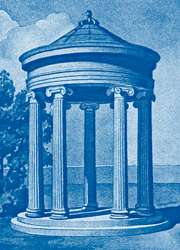
Reconstruction of the Temple
of Roma and Augustus. [3] |
| |
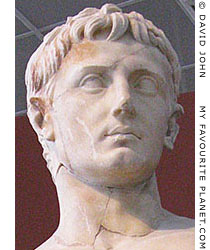
Emperor Augstus depicted
as a youthful hero. Detail of
a statue thought to have
been made in Thessaloniki
during the reign of his
successor Tiberius (14-37 AD).
Thessaloniki Archaeological
Museum. |
|
